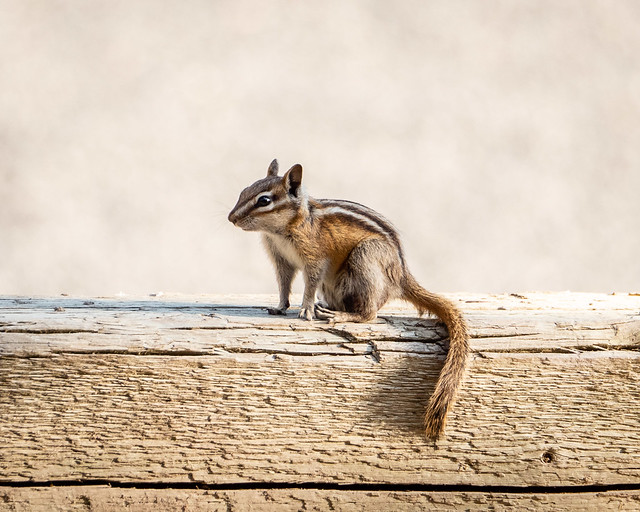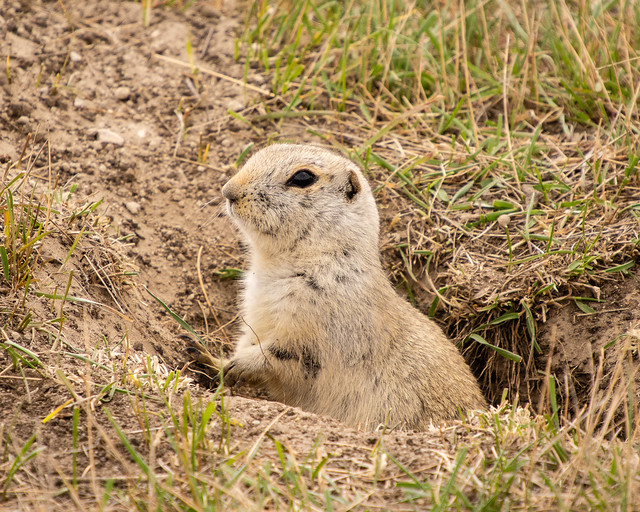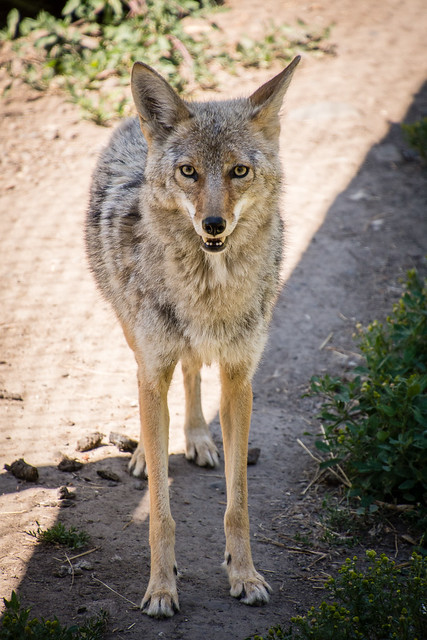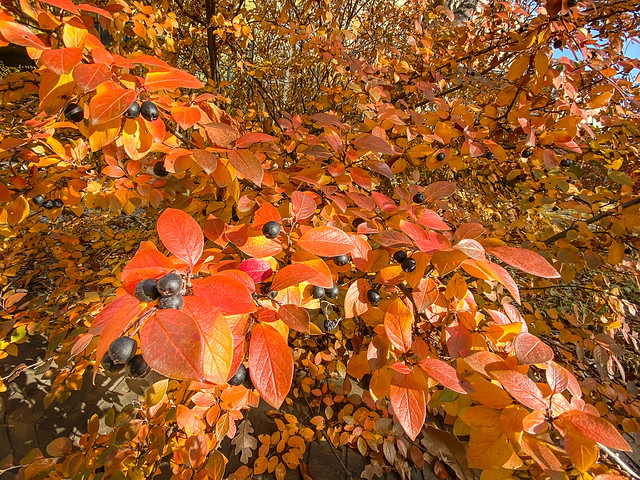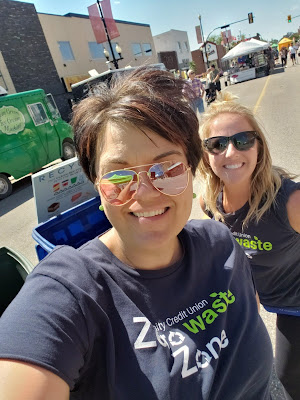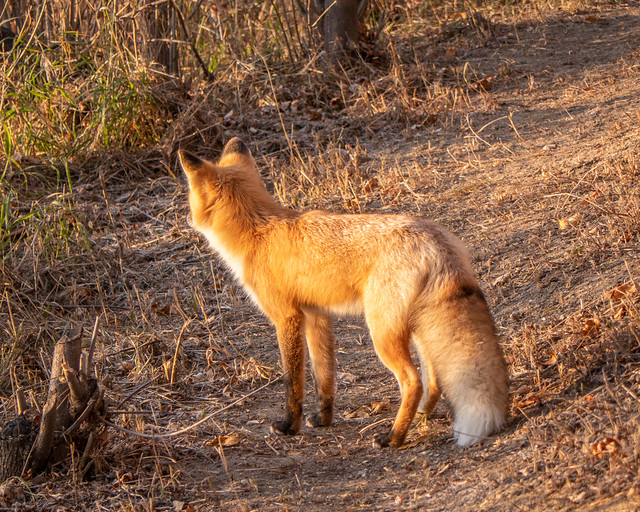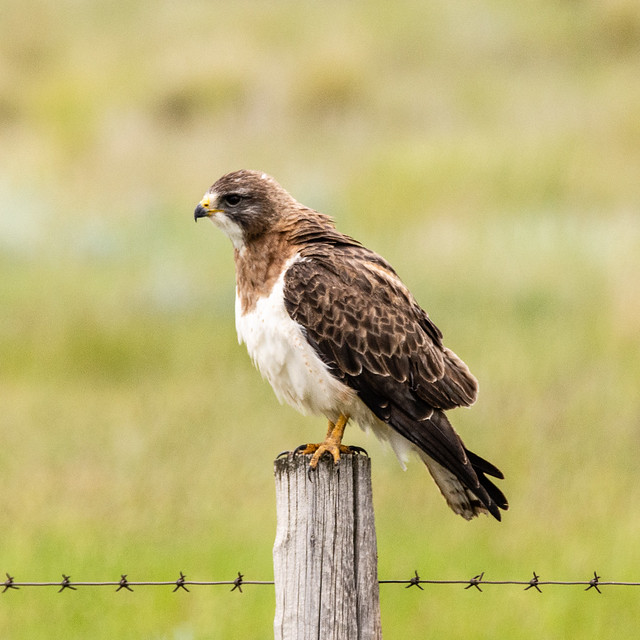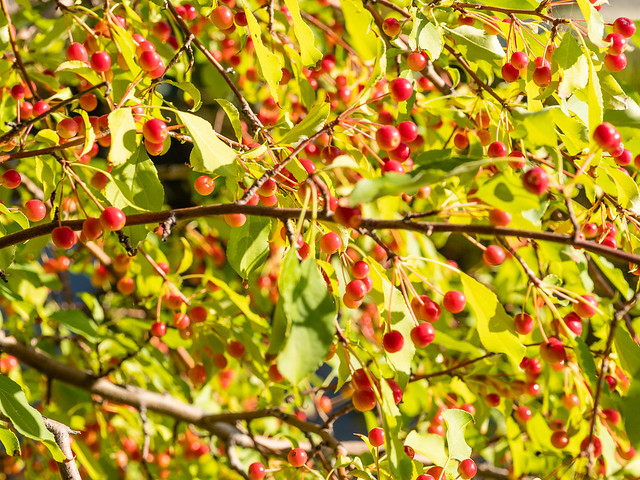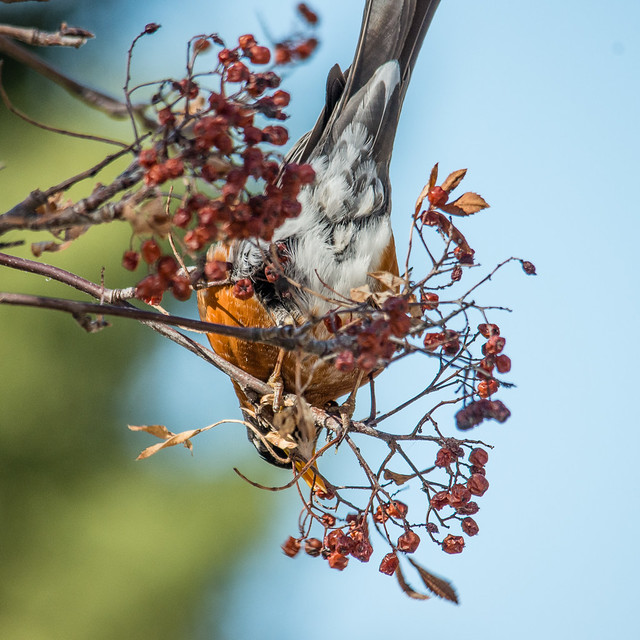Tuesday, 29 October 2019
EcoSask News, October 29, 2019
Upcoming Events
Place-Based Education, Nov. 1 (Saskatoon)
Join Janet McVittie and Sonal Kavia to discuss place-based education: place, space, and mindfulness at 4:30 pm, Nov. 1, in the SERI Meeting Space, College of Education.
Household Hazardous Waste, Nov. 3 (Saskatoon)
You can dispose of household hazardous waste at City of Saskatoon’s Civic Operations Centre from 9 am – 3:30 pm, Nov. 3.
Climate Youth Voice, Nov. 6 (Saskatoon)
Saskatoon Enviro Collective is hosting a panel discussion and group conversation for adults to hear from youth about climate change from 7-8:30 pm, Nov. 6, at Station 20 West.
National Energy Code, Nov. 6 (Saskatoon)
Kelly Winder will provide an overview of the National Energy Code for Buildings at the Nov. 6 breakfast meeting of the SK Energy Management Task Force.
The Pollinators, Nov. 11 (Regina, Saskatoon)
Sign up now if you would like to attend a special screening of The Pollinators in Regina or Saskatoon.
Looking Ahead
Native Prairie Restoration/Reclamation and Transboundary Grasslands Workshop, Feb. 25-27 (Regina)
In 2020, SK PCAP is combining two workshops: the 7th Native Prairie Restoration and Reclamation Workshop and the 5th Transboundary Grassland Workshop, February 25-27 in Regina.
A full list of upcoming events can be found on the EcoFriendly Sask Calendar
In the News
Urine diverting vermicomposting toilets are being installed along the Churchill River.
Positive media coverage of repair cafés in Regina and Swift Current this past weekend.
Citizens of all ages urge rethink of Saskatoon Freeway.
City of Victoria plans to protect any tree that is a foot thick or more.
SUVs have contributed more to the increase in global CO2 emissions than airlines, trucks, or heavy industry. And they’re far more likely than smaller vehicles to kill pedestrians and other drivers.
Kids raised in walkable communities earn more money as adults.
Small adjustments to wind turbines can reduce impacts on birds.
A visual depiction of the impact of the proposed Trans Mountain Pipeline on Vancouver’s harbor, Boundary Pass, and Juan de Fuca Strait.
Wilderness areas act as a buffer against species loss and could reduce extinction risks by more than half.
In an urban wilderness, “invasive” species may have a role to play.
David Attenborough, storyteller, and Yvon Chouinard, Patagonia, share their approaches to saving the planet.
Bat noises aren’t random. They’re complaining about food, position, unwanted sexual advances, and pushy neighbours.
Blueprint for Revolution: How to use rice pudding, Lego men, and other non-violent techniques to galvanise communities, overthrow dictators, or simply change the world [book review].
EcoSask News is a weekly round-up of local news and events. Email us if you have items you would like us to include.
You can follow EcoFriendly Sask by liking us on Facebook, following us on Twitter, or by email (top right corner).
Labels:
Bats,
Books,
Conferences,
Construction,
Films,
Prairie,
Regina,
Repair,
Saskatoon,
Swale,
Swift Current,
Transportation,
Trees,
University,
Urban,
Waste,
Wilderness,
Wind,
Youth
Sunday, 27 October 2019
Wildlife-Friendly Urban Planning
Saskatoon Joins the Urban Wildlife Information Network
For the first time ever, over half the world’s population lives in urban areas, and that number is expected to grow to 68% by 2050. Most of this growth is expected to occur in small and medium-sized cities, such as Regina and Saskatoon. Sprawl magnifies the challenges of a rapidly growing urban population as our cities are growing twice as fast spatially as population-wise. “It’s not going to slow down,” Katie Harris says. “We need to start putting into place initiatives that will combat habitat fragmentation and barriers to wildlife movement.”
Urban centres such as Saskatoon are a mix of buildings, parking lots, and streets, but there is also river valley, swale, slough, and wetlands. “There are patches of wildlife habitat within the non-habitat,” Katie explains. “Animals use those areas.” One recent study found that green areas outside the downtown core contained as many ground-dwelling mammals as did rural areas. The researchers noted that “this phenomenon of relatively unchanged fauna outside the downtown area shows that small cities have the potential to maintain a high level of diversity of small ground-dwelling mammals if appropriate planning of further building expansion is implemented. More studies of small cities are needed to better assess their impact on biodiversity. This knowledge can then be applied in better planning for urban wildlife.”
No one knows what or how many wild animals live within the confines of Saskatoon. Katie Harris, in conjunction with the international Urban Wildlife Information Network (UWIN), plans to find out.
Katie is working on her Master’s degree at the University of Saskatchewan. She describes herself as a “northern Manitoba girl” who grew up watching wildlife and going for walks in the bush. This was supplemented by 10 years of camping and environmental initiatives through Girl Guides of Canada. Katie has a dual diploma in conservation/restoration ecology and wildlife/fisheries conservation from Lakeland College as well as a Bachelor’s degree majoring in environmental science. She has just started working on her Master’s degree in animal science with funding from an NSERC scholarship. “The scholarship has given me greater flexibility in choosing my research topic,” Katie says. “They’re highly competitive awards and I’m proud to have received one.”
Katie will be studying urban mammals living in Saskatoon’s fragmented urban landscape. A key element of her research will be to establish Saskatoon’s first-ever database documenting the wildlife living within the city. Her findings will contribute to the Urban Wildlife Information Network’s database, providing an opportunity to compare what is happening in Saskatoon with what is happening around the world.
Saskatoon is the second Canadian city (after Edmonton) to join the Urban Wildlife Information Network. The Network’s partners contribute to the largest international study on urban wildlife in existence gaining valuable opportunities to share information based on comparative data. Dr. Maureen Murray of the Urban Wildlife Institute, Lincoln Park Zoo, Chicago, was the keynote speaker at the 2019 NatureCity Festival, providing an overview of the importance of the work being undertaken by UWIN's partners.
A small committee of community partners (University of Saskatchewan, City of Saskatoon, Meewasin Valley Authority, Saskatoon Forestry Farm Park and Zoo, Saskatoon Nature Society) is assisting Katie with her work. The Forestry Farm Park and Zoo generously contributed 25 trail cameras that will be used to track the wildlife that move about the city. Cameras already set up in the Northeast Swale will be used to provide supplementary data.
The cameras will be set up along a transect with north/south and east/west lines leading away from the central point at Meewasin’s downtown office building. The cameras will be set up within one kilometre on either side of the transect and about a kilometre apart. Their placement will carefully follow UWIN’s guidelines in order to provide relevant comparisons with other cities based on the degree of habitat fragmentation and population density.
Katie’s focus will be on the mammals that show up on the cameras, but the material will be archived and available for other researchers who may want to study birds, reptiles, or other wild creatures. Privacy will be maintained by blurring human faces and making an effort not to install cameras on private property. There will be opportunities for the public to get involved in checking to make sure the cameras are still in place and in helping to identify wildlife on Zooniverse. Katie will also be sharing some of the photographs on social media.
Katie hopes the database will be a long-term, 30-50 year project providing a rich database for future biodiversity-friendly urban planning. “We need to adapt to the needs of urban wildlife,” Katie says. “It’s possible we won’t have these animals in future if we don’t become more flexible.”
If you would like to be involved in tracking urban wildlife, contact your local nature society or Nature Saskatchewan.
Tuesday, 22 October 2019
EcoSask News, October 22, 2019
Upcoming Events
Waste Reduction Conference, Oct. 22 (Prince Albert)
The City of Prince Albert is hosting a Waste Reduction Week conference from 9:30 am-12 pm, Oct. 22.
Blood-Sucking Creatures, Oct. 25 (Moose Jaw)
Richard Pickering will discuss blood-sucking creatures in Saskatchewan at the 7:30 pm, Oct. 25, meeting of the Moose Jaw Nature Society.
NWT Road Trip, Oct. 26 (Fort Qu’Appelle)
There will be a presentation on a road trip through the Northwest Territories at the 7 pm, Oct. 26, meeting of the Fort Qu’Appelle Nature Society held at the Fort Qu’Appelle train station.
Repair Café, Oct. 26 (Gravelbourg)
Gravelbourg is holding its first repair cafe from 9 am-12 pm, Oct. 26.
Repair Cafés, Oct. 26 (Saskatchewan)
Saskatchewan Waste Reduction Council is hosting repair cafés in a number of Saskatchewan cities on Oct. 26 from 10 am-2 pm as part of Waste Reduction Week.
Household Hazardous Waste Day, Oct. 26 (Regina)
City of Regina is holding a Household Hazardous Waste Day on Oct. 26.
Dark Skies at the Creek, Oct. 26 (Saskatoon)
Celebrate International Bat Week with Meewasin at Beaver Creek from 12 – 11 pm.
NatureCity 2020 Celebration, Oct. 28 (Saskatoon)
There will be a planning meeting for NatureCity Festival 2020 at 7 pm, Oct. 28.
Scary Birds, Oct. 28 (Saskatoon)
Just in time for Hallowe’en, Lyndon Penner will introduce unsettling birds from around the world at 7 pm, Oct. 28.
Car Share Co-op AGM, Oct. 30 (Regina)
Regina Car Share Co-op is holding its annual general meeting at 7 pm, Oct. 30, at 1109 East Broadway Avenue.
Goatsuckers, Oct. 30 (webinar)
Mark Brigham will discuss Goatsuckers: The Enigma of Feathered Bats in a noon-hour webinar on Oct. 30.
Sharp-tailed Grouse, Nov. 1 (Regina)
Brandon Burda will discuss Sharp-tailed Grouse: Habitat Selection and Population Trends in Saskatchewan from 2:30-3:45 pm, Nov. 1, at the University of Regina.
Looking Ahead
Build Sask Green, Nov. 14 (Regina)
This year’s Build Sask Green conference is in Regina on Nov. 14.
A full list of upcoming events can be found on the EcoFriendly Sask Calendar
In the News
University of Saskatchewan 2018/2019 Greenhouse Gas Inventory Report.
“Frugality is an environmental statement that’s far more powerful than empty words or bumper stickers.”
What if we thought of our world as something precious to be handed down through time?
Planting native prairie could be a secret weapon for farmers.
Wildlife road crossings not only protect vulnerable animals and genetic diversity – they save money by preventing car repair and medical expenses following a collision.
“Because the House Sparrow can digest agricultural grains, they thrive pretty much anywhere—as long as it’s near people and our foodstuffs.”
Wildlife photographer of the year award winners.
EcoSask News is a weekly round-up of local news and events. Email us if you have items you would like us to include.
You can follow EcoFriendly Sask by liking us on Facebook, following us on Twitter, or by email (top right corner).
Sunday, 20 October 2019
Supporting Sustainability Initiatives: Affinity Credit Union
As a Saskatchewan financial co-operative, Affinity Credit Union believes in building a better world by enabling members and communities to invest in one another. Approximately 6% of their pre-tax profits go back into the communities they serve through donations and sponsorships in four specific areas:
1. Building community assets and facilities (e.g. community rinks, parks, seniors’ centres);
2. Social and financial inclusion (e.g. financial literacy, anti-poverty, job readiness and mentoring programs);
3. Local economic development (other co-operatives, regional development authorities, non-profits engaged in revenue diversification, such as Habitat for Humanity ReStore, Crocus Co-op catering services); and
4. Environmental sustainability.
Community support is provided at a regional level through the district councils and at a provincial level by the head office. Along with the board and Indigenous Council, the districts help the corporate office stay in touch with what is happening around the province. The district councils often fund community assets and facilities, but they also work with the corporate office in considering sustainability projects. The corporate office funds province-wide initiatives as well as larger grants that will have a greater impact.
Environmental Sustainability
Cara Bahr is the Community Engagement Manager for Affinity Credit Union and works with a six-person team to oversee the Credit Union’s donations and sponsorship program. “We’ve been supporting environmental initiatives for over 10 years. It’s very important,” she says. Here are a few of the many environmental sustainability projects the Credit Union has supported.
Solar-Powered Car Shares in Saskatoon and Regina
With support from Affinity and other community partners, the Saskatoon CarShare Co-operative became the first public carshare in Canada with 100% solar-powered electric vehicles. Affinity is now working with the Regina Car Share Co-operative to bring solar-powered electric carshare vehicles to Regina as well.
Zero-Waste Events
Over the past two years, Affinity has partnered with the Saskatchewan Waste Reduction Council to co-ordinate zero-waste events. They would like to expand the program to other major centres across the province but will need to ensure they have sufficient resources. For example, Saskatoon Loraas has a composting facility, which has been very useful in ensuring zero-waste events, but it’s the only one in the province.
Affinity is also providing financial support for many of the upcoming repair cafés being held across Saskatchewan during Waste Reduction Week.
Gasification Boiler
With financial assistance from Affinity, the Northwest YMCA in Regina installed a gasification boiler that converts garbage into biofuel to heat the swimming pool 365 days a year. This has enabled the YMCA to reduce their energy costs by as much as $30,000 a year.
Montreal Lake Greenhouse
High school students from Montreal Lake Cree Nation built a four-season greenhouse using environmentally sustainable materials and solar panels. In addition to helping with the greenhouse, Affinity provided the students with financial literacy training.
Organizational Support
Affinity Credit Union has been partnering with the Saskatchewan Environmental Society for at least 10 years on building operator training and energy audits for non-profit organizations. In addition, they sponsor the annual Living Green Expo. The Saskatchewan Waste Reduction Council’s annual Waste ReForum is also sponsored by Affinity.
Internal
Affinity conducted an internal energy audit of its corporate office last year and is using as many sustainable and energy-efficient products as possible. Their organic waste is collected and composted by Loraas.
Future Plans
Affinity is stepping up its environmental sustainability initiatives as they believe this is what their members are looking for. “There are going to be some great opportunities to do things differently and move things forward in the next few years,” Cara says.
They hope to help families finance solar panels, perhaps through a line of credit or a 10-year fixed consumer loan. They are also open to whatever opportunities present themselves.
How to Apply
Online information as well as an electronic form are available to apply for a donation or sponsorship. Applications are considered once a week and Cara recommends applying early in the year as more of the money will still be available at the beginning of the Credit Union’s calendar year.
When reviewing applications, Affinity considers community impact, brand awareness, and whether the project provides hands-on opportunities for member/employee engagement (e.g. employees separating garbage at zero-waste events).
Further Information
Cutting Down on Waste: Saskatchewan Waste Reduction Council
Saskatoon CarShare Co-operative (2015)
Photo Credit: Facebook pages for Affinity Credit Union and Saskatchewan Environmental Society
Tuesday, 15 October 2019
EcoSask News, October 15, 2019
Upcoming Events
Repair Café, Oct. 19 (Prince Albert)
Celebrate and share maintenance and repair skills from 1-4 pm, Oct. 19, at Repair Café Prince Albert.
Bat Workshop, Oct. 19 (Saskatoon)
Think bats are spooky? Let Melanie Elliot change your mind from 2-5 pm, Oct. 19. Seating is limited; register by emailing info@wrsos.org.
Hidden Bird Song, Oct. 21 (Regina)
John Patterson will share his interest in recording and analyzing bird song at the 7:30 pm, Oct. 21, meeting of Nature Regina.
Regina CarShare Co-operative, Oct. 22 (Regina)
Find out about the Regina Car Share Co-operative at noon, Oct. 22, at Innovation Place Regina.
Unmasking Recycling, Oct. 22 (Saskatoon)
Explore recycling’s myths, realities, and alternatives at Café Scientifique at 7:30 pm, Oct. 22.
Single-Use Plastics, Oct. 25 (Regina)
Do you live or work in Regina? Be sure to fill out this survey on single-use plastics by Oct. 25.
Growing Up Wild, Oct. 25 (Saskatoon)
SaskOutdoors is offering the Growing Up Wild early childhood education program from 1-4 pm, Oct. 25.
 |
| Urban wildlife |
Looking Ahead
Project Wet, Nov. 16 & 30 (Saskatoon, Regina)
SaskOutdoors is hosting Project Wet workshops in Saskatoon on Nov. 16 and in Regina on Nov. 30.
A full list of upcoming events can be found on the EcoFriendly Sask Calendar
In the News
“Just 20 fossil fuel companies . . . have produced 35% of the carbon dioxide and methane released by human activities since 1965. This was the year in which the president of the American Petroleum Institute told his members that the carbon dioxide they produced could cause 'marked changes in climate' by the year 2000.”
What if we axed air miles schemes and introduced an escalating levy on frequent flyers?
Low-carbon options for heavy industry like steel and cement are scarce and expensive.
When we plan our cities around great bus service, buses become a first choice.
Broadening the climate conversation: what if the choices we make to fight climate change were framed as things people actually want to do?
Tiny house, smaller footprint: We can be space conservationists and leave more room for other species.
Patagonia’s entrepreneurial vision addresses sustainability genuinely and dynamically.
Meet the world’s 10 coolest bats – there’s one with a wrinkled-face, another is a master angler.
EcoSask News is a weekly round-up of local news and events. Email us if you have items you would like us to include.
You can follow EcoFriendly Sask by liking us on Facebook, following us on Twitter, or by email (top right corner).
Labels:
Bats,
Birds,
Business,
Children,
Communication,
Energy,
Housing,
Industry,
Prince Albert,
Recycling,
Regina,
Repair,
Saskatoon,
Transportation,
Water
Thursday, 10 October 2019
DAM IT! Let's Live with Beavers
The University of Saskatchewan held an EcoHack on October 4 & 5, 2019. Multidisciplinary student teams worked together to identify viable solutions to problems presented by their community partners. Living Sky Wildlife Rehabilitation asked students how we might facilitate non-lethal coexistence with beavers in the city. Serafima Raskina and Saiyida Noor Fatima not only accepted the challenge but came up with the winning presentation. They generously agreed to share their ideas on EcoFriendly Sask. The following material has been pulled from their winning presentation.
Problem: Some People Don’t Like Beavers
They chew trees
They build dams
What Is Done About It?
Hunting and trapping
Breaking their dams
Relocation
Scaring them off
Why Do We Even Care?
“Little climate change fighting machines”
Species richness & biodiversity
Adjust groundwater level
Store water for droughts
Eco-Friendly Solutions
Tree wrapping
Grow the trees they prefer
Flowing devices
Place rocks & stones along the trails
But Most People Still Don’t Know That
 |
| Photo credit: Sean Taylor |
Our Proposal: Beaver Week, April 2020
Children
Education camps
Field trips to beaver dams
Beaver watching in spring
Spread the cuteness of beavers
(Young Naturalists)
Campus Clubs
Wildlife workshops
Lecture on beaver importance
Beaver watching in spring
DIY tree-wrapping
(SENSSA, Parks Canada)
City Council Presentation (depending on approval/availability)
Cost-effectiveness of tree wrapping & flow devices
Training & consultation proposal
Public
Beaver & dam watching
DIY tree-wrapping
Beaver Creek hiking & FREE FOOD
Let us know if you’d like to become involved in Beaver Week and we’ll pass your inquiry on to Serafima and Saiyida.
Further Information
NEW! Beavers: Coexistence Strategies for Municipalities and Landowners (The Fur-Bearers)
10 Surprising Facts About Beavers – And Why They Make Great Neighbours
Living with Beavers
Tuesday, 8 October 2019
EcoSask News, October 8, 2019
Give-a-Dam Info Session, Oct. 10 (Moosomin)
Lower Souris Watershed Committee will be holding an information session about the Moosomin Dam from 2-8 pm, Oct. 10. RSVP as session will be followed by a supper.
Singing for a Better World, Oct. 10 & 22/Nov. 14 & 26 (Saskatoon)
Learn songs about protecting the earth and building peace and justice at 7 pm, Oct. 10, Oct. 22, Nov. 14, and Nov. 26.
Bats and You, Oct. 12 & 19 (Saskatoon)
Kids are invited to find out about bats from 2-2:45 pm on Oct. 12 (Rusty Macdonald Branch Library) and Oct. 19 (Alice Turner Branch Library).
EnviroCollective, Oct. 15 (Regina)
EnviroCollective Regina will be meeting from 7-9 pm, Oct. 15.
Sustainable Saskatoon, Oct. 15 (Saskatoon)
Hilary Carlson and Kristin Bruce will speak about the City of Saskatoon’s Climate Action Plan at 7 pm, Oct. 15.
Campus Sustainability Tour, Oct. 15 (Saskatoon)
Register to explore the hidden aspects of the U of S campus that drive sustainability from 1-2:30 pm, Oct. 15.
Climate Change: Myth vs. Reality, Oct. 16 (Saskatoon)
The second annual U of S Senate Forum will be held from 4-6 pm, Oct. 16.
Snakes & River Valleys, Oct. 16 & 17 (Eastend, Mankota)
Ray Poulin, Royal Saskatchewan Museum, will explain why large river valleys are essential to rare snakes in Saskatchewan at 7 pm, Oct. 16, in Eastend and at 7 pm, Oct. 17, in Mankota. The presentation will be recorded and uploaded on the PCAP YouTube channel.
Heritage Landscapes, Oct. 17 (Eastend)
Clinton Westman will share his research project on heritage landscapes in southern Saskatchewan, including the reintroduction of bison at Old man on His Back, at 7:30 pm, Oct. 17, at Eastend Public Library.
The Art of Nature, Oct. 17 (Saskatoon)
Cam Forrester will share his love of painting, drawing, and nature at the 7:30 pm, Oct. 17, meeting of the Saskatoon Nature Society.
Zero Waste Workshop, Oct. 17 (Saskatoon)
Learn how to reduce waste and get closer to a zero-waste lifestyle from 12-2 pm, Oct. 17, at the University of Saskatchewan.
Farmland Drainage, Oct. 18 (Regina)
Jeff Olson, Citizens’ Environmental Alliance, will be discussing Saskatchewan farmland drainage and the environment from 2:30-3:45 pm, Oct. 18, at the University of Regina.
Saskatoon Young Naturalists
Nov. 16, 1-2:30 pm – Bird Feeder Workshop
Space is limited; register early to avoid disappointment.
Golden Eagles
Oct. 17, 9 am – Birding at Ashworth Holmes Park
Oct. 24, 8:30 am – Watrous County Geological History
Retirees and partners who are interested in birds and the natural world are invited to participate.
Other Saskatoon Nature Society Field Trips
Oct. 14, 9:30-11:30 am – Woodlawn Cemetery Bird Walk
Oct. 27, 1-5 pm – Blackstrap Lake Birding
Everyone is welcome. Check the Saskatoon Nature Society’s website for full details and updated information.
A full list of upcoming events can be found on the EcoFriendly Sask Calendar
In the News
Unplastic Northern Sask focuses on reducing + reusing.
European Union approves right to repair law, including measures for repairability and recyclability.
Enviromenstrualism: Sanitary products are the fifth most common item found on Europe’s beaches, more widespread than single-use coffee cups, cutlery or straws.
“Claiming to fight climate change while subsidizing fossil fuels is as crazy as brushing your teeth while eating Oreos.”
Fish that thrive in toxic water, pigeons eating junk food without becoming hypoglycemic, ants that don’t mind urban heat – what can we learn from wildlife that is evolving rapidly in response to an urban environment?
A free online report outlines the key steps to take in building community power to win campaigns.
EcoSask News is a weekly round-up of local news and events. Email us if you have items you would like us to include.
You can follow EcoFriendly Sask by liking us on Facebook, following us on Twitter, or by email (top right corner).
Sunday, 6 October 2019
Grassland Neighbours
Saskatchewan’s grasslands are home to a wide variety of species. It’s human nature to focus on the mammals, but there are thousands of other species – from bacteria and lichens to grasshoppers, snakes, ground squirrels, and coyotes. “It’s like going to the movies,” says Greg Fenty, coordinator, Saskatoon Young Naturalists. “We always focus on the movie stars and yet there are 7 minutes of credits. Without those people, Daniel Craig couldn’t jump from building to building. Everything is dependent on each other.”
Habitat Adaptation
Plants and animals can only live in a specific area, such as grasslands, if it meets their requirements for life – food, water, air, and shelter. “Animals must feel safe enough to reproduce,” Greg says. “If those basic conditions are met, the animals can often adapt to changes in their environment.”
Greg studied hawks with Stuart Houston, and it opened his eyes to why animals migrate. “It’s not about temperature,” Greg says. “The main driving factor is food. Richardson’s ground squirrels hibernate in the winter so the hawks head south to Argentina where they feed on grasshoppers until winter arrives in the southern hemisphere and they head back north.” What’s particularly surprising is how much the birds’ behaviour changes with the habitat. In Canada, they are solitary hunters, whereas in Argentina they congregate in large flocks to munch on grasshoppers. It’s all about adapting to the environment.
Evolution has played a big role in establishing a habitat that supports life. Greg says the prairie grasslands are “chock-a-block full of flowers – as many as an alpine meadow and you don’t have to climb 2000 meters to see them.” But the plants don’t all flower at once. Instead, they follow one another, providing food for pollinators over an extended period. “The crocuses are one of the first to flower in the spring, just when lots of insects are coming out of hibernation,” Greg explains. “Next is golden bean, and in the fall there’s goldenrod.”
Fruit-bearing plants are similar with Saskatoon berries ripening first, followed by chokecherries, and then buffalo berries. There’s always something for berry eaters to eat.
Wild Neighbours
Grassland plants and animals cannot survive in isolation. In fact, at times, coexistence can upset the normal predator-prey relationship. Prairie dogs nest underground for protection from predators, such as snakes. However, snakes will use the prairie dog burrows when they need a spot below the frost line to hibernate.
Prairie dogs are a keystone species supporting over 130 other species. If they are wiped out, it sets off a whole chain of events affecting the whole ecosystem: "In addition to serving as a food source for coyotes, eagles, the endangered black-footed ferret, and other animals, they are ecosystem engineers, maintaining the health of arid grasslands by churning, aerating, and fertilizing soil as they create vast and intricate underground colonies. Their digging allows an array of vegetation to thrive, which in turn supports a greater number of elk, bison, and other grazers. And their burrows provide shelter for animals like rattlesnakes, burrowing owls, and jackrabbits. When prairie dogs disappear from their native grasslands habitat, woody plants can take over, fundamentally altering the prairie ecosystem." (Keystone Species 101)
Animals tend to become specialists in hunting specific species. Black-footed ferrets and swift fox don’t wander far from the prairie dog range, while Swainson’s, red-tailed, and ferruginous hawks’ territory overlaps almost exactly with that of Richardson’s ground squirrels. “The timing is ideal,” Greg says. “The hawklets are learning to hunt just when the naïve, goofy young ground squirrels are coming out of their burrows – a perfect opportunity for the young hawks to hone their hunting skills.”
Cougars used to be much more plentiful, but that situation changed as more and more people moved onto the prairies. “Humans and big cats don’t get along because humans are potential prey,” Greg explains. The cougars were almost wiped out from most agricultural areas, and remote areas such as the Cypress Hills uplands or Moose Mountain became refuges for cougars that were shot if they ventured out. Greg says the situation began to change during the first and second world wars as lots of young men left and there was an ammunition shortage. “The white-tailed deer got a really good foothold, their numbers increasing dramatically in the late ‘40s,” Greg says. “Cougars love to eat white-tailed deer so cougar numbers increased and they were forced to out-migrate to find food. Now we’re seeing more cougars along the Saskatchewan River valley and north of Cypress Hills.”
Habitat Is Everything
The complex relationships between species and their multiple adaptations to their shared habitat are impossible to reproduce. “We can try and restore an area, such as a wetland, but it’s guesswork,” Greg says. “We just don’t know what was there. Habitat is key. The only way to save species in decline is by saving the habitat.”
Saskatoon Young Naturalists
Saskatoon Young Naturalists has been introducing young people to nature since 1968 when Stuart and Mary Houston set up the Junior Naturalist Society. Greg Fenty has coordinated the Young Naturalists’ program since 1995. “I like working with kids,” Greg says. “They’re so open. You go out looking for a snake hibernaculum but come across something else and that’s a fun discovery. What’s interesting is often the offshoots. Just get out there and see what’s happening.”
Saskatoon Young Naturalists’ activities are open to all ages and offer nature-based activities designed for families. Content is geared towards the 5- 11 year old range. Upcoming programs include a bird feeder workshop and the Christmas bird count for kids.
 |
| Greg Fenty - identifying butterflies |
Tuesday, 1 October 2019
EcoSask News, October 1, 2019
Upcoming Events
Protect Our Boreal Forest, Oct. 2 (Prince Albert)
Join the Council of Canadians in asking for a moratorium on logging in the boreal forest at 6:30 pm, Oct. 2.
100 Debates on the Environment, Oct. 3 (Saskatoon)
Saskatoon University is hosting a debate on the environment at 7 pm, Oct. 3, during the federal election campaign.
90 Years of Conservation, Oct. 3 (Moose Jaw)
Learn about the history and purpose of the Saskatchewan Wildlife Federation at 2:30 pm, Oct. 3.
Library of Things Fall Meeting, Oct. 3 (Saskatoon)
Learn what’s happening at the Library of Things at 6 pm, Oct. 3.
100 Debates on the Environment, Oct. 4 (Fort Qu’Appelle)
Regina Qu’Appelle is hosting a debate on the environment from 7-9 pm, Oct. 4, during the federal election campaign.
SaskOutdoors 50th Birthday Party, Oct. 4 (Echo Lake)
Join SaskOutdoors in celebrating their 50th anniversary with outdoor activities from 5-10 pm, Oct. 4.
EcoHack, Oct. 4 & 5 (Saskatoon)
EcoHack will bring together students from across the U of S campus to solve locally sourced environmental/sustainability-related problems.
Traditional Plant Walk, Oct. 6 (Saskatoon)
The Saskatchewan Archaeological Society is hosting a traditional plant walk from 10:30 am-12:30 pm, Oct. 6.
Household Hazardous Waste, Oct. 6 (Saskatoon)
You can dispose of household hazardous waste at City of Saskatoon’s Civic Operations Centre from 9 am – 3:30 pm, Oct. 6.
Wildlife Friendly Fencing, Oct. 6 & 8 (Saskatoon)
Help Meewasin install wildlife friendly fencing around the Northeast Swale at 2 pm, Oct. 6, and 4 pm, Oct. 8. There will be more opportunities in October; register to stay informed.
The Importance of Grasslands, Oct. 7 (Saskatoon)
Renny Grilz will discuss the importance of grasslands and show a film about Grasslands National Park at 7:30 pm, Oct. 7, at Grace-Westminster United Church.
Starlight at Sunrise, Oct. 8 (Regina)
Explore the universe with the Royal Astronomical Society from 7-8:30 pm, Oct. 8.
Organic Waste Diversion, Oct. 9 (Saskatoon)
Find out about the City of Saskatoon’s plans for organic waste diversion at noon, Oct. 9, at Innovation Place.
Hug a Tree and Survive, Oct. 10 (Prince Albert)
Find out how children can stay safe in the woods at 7 pm, Oct. 10.
Looking Ahead
Putting Beavers to Work, Oct. 23 & 24 (Calgary)
A two-day seminar in Calgary on Oct. 23 & 24 will look at beavers’ role in watershed resiliency and restoration through both talks and a coexistence tools demonstration.
Project Wet, Nov. 16 & 30 (Saskatoon, Regina)
SaskOutdoors is hosting Project Wet workshops in Saskatoon on Nov. 16 and in Regina on Nov. 30.
A full list of upcoming events can be found on the EcoFriendly Sask Calendar
In the News
Be sure to sign the petition to save Saskatoon’s Northeast Swale, which is currently under threat from the Saskatoon Freeway.
“Now is the time for climate change frames that question whether a finite planet can sustain eternal growth.”
Scenarios for a zero-waste future.
“If you see how cars, streetcars, bikes, and pedestrians use this street in Zürich, you can better understand what’s wrong with so many other urban thoroughfares.”
The 3 best eco-friendly toilet papers.
EcoSask News is a weekly round-up of local news and events. Email us if you have items you would like us to include.
You can follow EcoFriendly Sask by liking us on Facebook, following us on Twitter, or by email (top right corner).
Labels:
Astronomy,
Beavers,
Children,
Economy,
Forest,
Fort Qu'Appelle,
Grasslands,
Moose Jaw,
Plants,
Politics,
Prince Albert,
Regina,
Saskatoon,
Swale,
Transportation,
University,
Waste
Subscribe to:
Posts (Atom)

